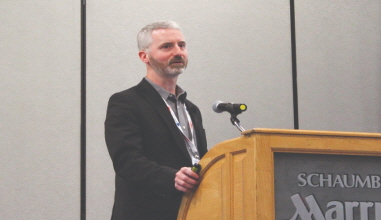-Increased focus on lighting key in auto safety awardsJessica Lynn Walker Only one Detroit 3 vehicle made the list: the Cadillac XT6, for models built after October 2019.Changing criteria for headlights is holding back many cars from getting top marks from the Insurance Institute for Highway Safety.IIHS, which evaluates passenger vehicles for its Top Safety Pick and Top Safety Pick+ awards, gave 23 vehicles its Top Safety Pick+ award, down seven from the 2019 model year. IIHS President David Harkey told Automotive News that the decrease came from more stringent criteria for headlights.Headlights, produced with polycarbonate and other engineering plastics, must have "good" or "acceptable" ratings from IIHS to be considered for safety designations. They must also offer "advanced" or "superior" front-crash prevention systems.Only one Detroit 3 vehicle made the list: the Cadillac XT6, for models built after October 2019. The California-built Tesla Model 3 also qualified. The designation plays a part when consumers shop for vehicles, according to dealers.2020 Cadillac XT6 Premium LuxuryIIHS first began rating headlights in 2016, testing for how well they lit the road ahead, whether they were properly focused to show the road both on curves and on a straight road, and if they caused glare for other drivers. Only one lighting system received a good rating out of 80 headlight systems tested.In 2019, 14 percent of headlights were rated as "good."To earn a 2020 Top Safety Pick+ award, vehicles must have "good" ratings in IIHS' passenger-side small overlap front, moderate overlap front crash, side crash, roof strength and head restraint tests.Five Mazda vehicles are 2020 Top Safety Pick+ winners: the Mazda3 sedan, Mazda3 hatchback, Mazda6, CX-3 and CX-5. It also won a Top Safety Pick for the CX-9.Harkey said Mazda stood out in awards this year because it applied "good" or "acceptable" headlights across its entire fleet."Pedestrian fatalities have significantly risen over the past decade," Harkey said. "We've seen a 53 percent jump in pedestrian fatalities since 2009. … Having this technology available on vehicles we think is going to be an important part of the solution."No minivans or pickups qualified for either award so far this year."That could change if automakers make midyear production changes and nominate the vehicle for testing," IIHS said. Minivans and pickups "barely missed out" due to criteria relating to pedestrian-detection technology, Harkey said.Steve Fecht for CadillacMedia get a closer look at the 2020 Cadillac XT6 Sunday, January 13, 2019 at a special event in Detroit, Michigan. The XT6 is a three-row crossover available in Premium Luxury and Sport models. The XT6 offers driver assistance and safety technologies that include sophisticated radar, camera and other sensor-based technologies. The XT6 is powered by a 3.6L V-6 engine and nine-speed automatic transmission. (Photo by Steve Fecht for Cadillac)Hyundai Motor Group, including the Genesis and Kia brands, won 14 Top Safety Pick awards and three Top Safety Pick+ awards.In addition to the Top Safety Pick+ winners, another 41 vehicles earned IIHS' Top Safety Pick awards.Fiat Chrysler and Mitsubishi failed to have any vehicle model earn either award this year. Ford, Volvo and BMW won Top Safety Pick awards, but no Top Safety Pick+ awards, IIHS said. General Motors, besides the XT6 winning a Top Safety Pick+, won a Top Safety Pick for the Chevrolet Equinox.Nissan won a Top Safety Pick+ for the Maxima and a Top Safety Pick award for the Altima."We were pleased that the number was up slightly," Harkey said. "Automakers continue to make improvements. ... A lot of the systems that we have tested have met that criteria. My guess is that by the time we get to the 2022 model year, [improved braking] systems that will be available will not only cover the vehicle interactions, but it will take care of the pedestrian piece as well."source : https://www.plasticsnews.com/news/increased-focus-lighting-key-auto-safety-awards
editor
2020-03-01




















